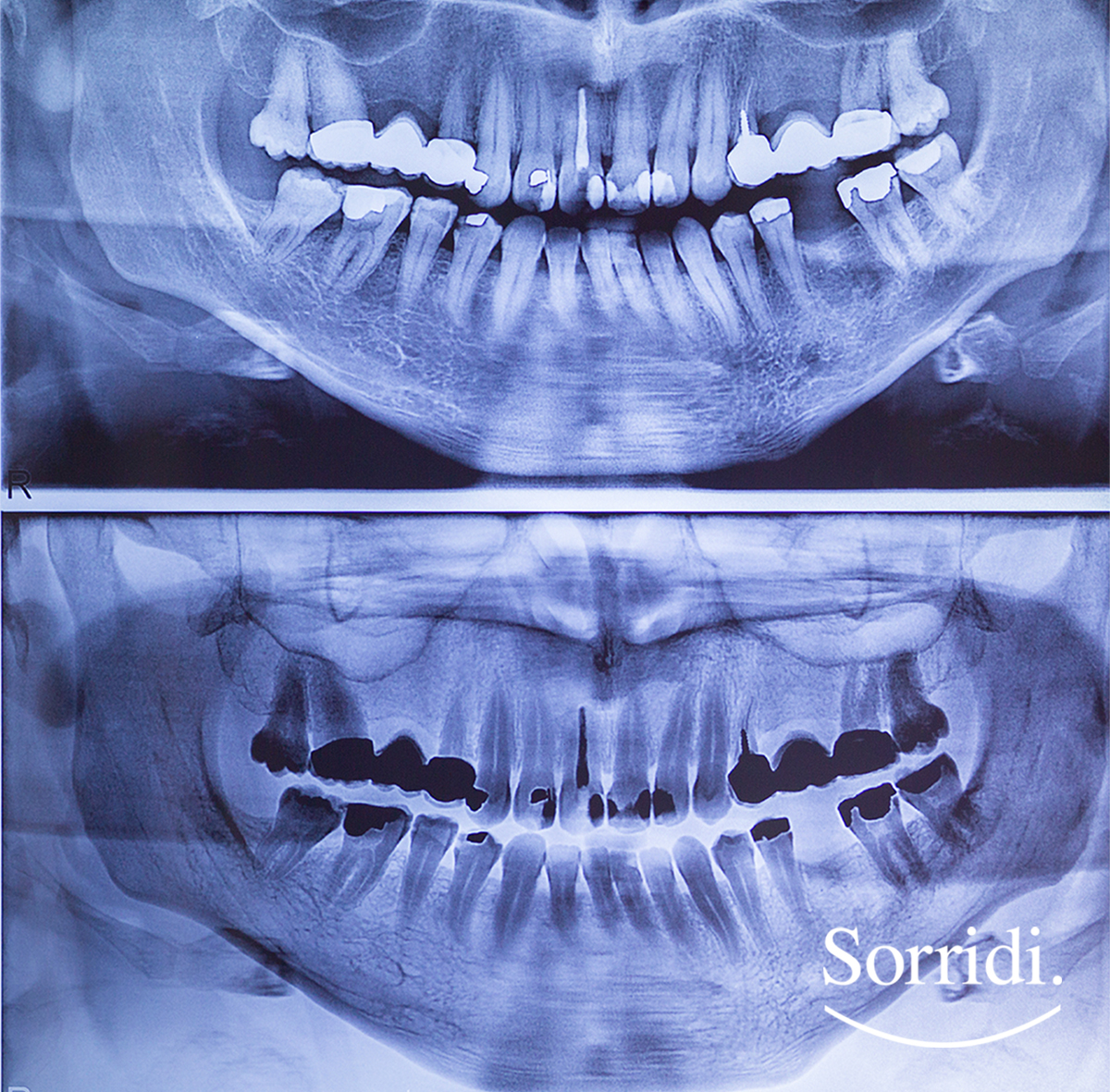
26 Mar Radiografie dentali: Sono dannose per la salute?
Facciamo chiarezza sulle radiografie dentali. Molti dentisti ricorrono con eccessiva frequenza e leggerezza alle radiografie ai denti, mettendo seriamente a rischio la salute dei propri pazienti.
Così la diffidenza dei pazienti verso questo tipo di esami cresce sempre più, insieme alla paura delle possibili conseguenze.
Ma facciamo un po’ di chiarezza.
- Innanzitutto a cosa servono le radiografie dentali? Sono necessarie?
Il tipo di radiografie dentali (ortopanoramiche, tac, dentalscan ecc.) rientrano tra i più validi strumenti di diagnosi e vengono utilizzati dai dentisti per fare una panoramica dentale efficace. Senza di esse non sarebbe possibile individuare tempestivamente la presenza di problematiche legate alla salute della bocca e non visibili ad occhio nudo, come:
- carie nascoste
- traumi o danni ossei
- ascessi e cisti
- lesioni alle radici dei denti
- problemi legati al corretto sviluppo dei denti (principalmente nei bambini)
E l’individuazione del problema, si sa, è il primo fondamentale passo verso la sua risoluzione.
Ma non è tutto! Tali strumenti permettono inoltre di definire piani di trattamento accurati per carie, devitalizzazioni, impianti dentali o rimozioni, apparecchi odontoiatrici e molto altro.
- Le radiografie dentali sono tutte uguali?
No. In base alle esigenze del paziente il dentista prescriverà l’esame più indicato.
Esistono tre principali tipi di radiografie dentali:
- le radiografie extra-orali si svolgono all’esterno della bocca e consentono una visione completa di arcate dentali, ossa della faccia, ossa della bocca e cranio. In questa categoria rientrano le panoramiche e le teleradiografie del cranio.
- le radiografie endorali vengono realizzate all’interno della bocca e permettono di indagare nel dettaglio le condizioni di singoli denti e aree specifiche. Tra queste rientrano gli RX bite-wing, i periapicali e gli occlusali.
- le radiografie tridimensionali – come tac e dentalscan – usate per approfondire ulteriormente problematiche emerse da precedenti RX e specialmente in caso di impianti dentali.
È chiara l’importanza delle radiografie per la promozione della salute orale. A patto però di limitarne gli abusi.
Il perché lo scoprirete nelle prossime righe.
- È vero che provocano danni alla salute?
In realtà la risposta è no; ma solo se utilizzati in maniera adeguata e con cautela.
Cerchiamo di spiegarlo in maniera chiara.
Le radiazioni, si sa, non fanno bene. La loro pericolosità però è strettamente legata al quantitativo di radiazioni a cui un paziente viene esposto e ai tempi di esposizione.
Se si ricorre a radiografie panoramiche delle arcate dentarie solo in caso di necessità e si adottano le giuste precauzioni, la dose di radiazioni derivanti da tali strumenti di diagnosi non è tale da mettere in reale pericolo la salute dei pazienti.
È un po’ come prendere il sole.
Farlo con moderazione, proteggendosi con creme solari, non è dannoso. Un’esposizione eccessiva invece può provocare brutte scottature e, se prolungata nel tempo, probabili danni alla salute.
Ma fate attenzione!
Non stiamo dicendo che i raggi x a cui vi sottopone il dentista non possono essere pericolosi. Anzi!
Ecco perché è necessario affidarsi a professionisti competenti e attenti.
- Ma allora è possibile sottoporsi a radiografia dentale senza correre inutili rischi per la salute?
Basta seguire meticolosamente le indicazioni fornite dagli esperti della Sidp e adottare alcuni importanti accorgimenti:
- eseguire un’accurata valutazione clinica per individuare l’esame più adatto alle specifiche esigenze del paziente (Con particolare attenzione in caso di donne in gravidanza e bambini)
- ricorrere ad esami dentali con raggi x solo se realmente necessario, eliminando gli abusi
- in caso di verificata necessità, optare per la soluzione più efficace ma con minore esposizione a radiazioni ionizzanti. Ad esempio, spesso, le mini-Rx e l’ortopanoramica sono preferibili alle “più pesanti” tac.
- ricorrere a tutte le misure cautelari del caso. Proteggere le aree sensibili con camici piombati e collari e ridurre al minimo l’ampiezza della zona analizzata.
- non utilizzare apparecchiature obsolete ed effettuare gli opportuni controlli periodici di manutenzione. A tal proposito ricordiamo che le moderne radiografie digitali restituiscono risultati immediati e di qualità, con una notevole riduzione delle radiazioni emesse (oltre l’85% in meno).
Evitare i rischi della radiografia dentale è possibile.
Ogni scelta e ogni piano di trattamento devono essere frutto di esperienza, dedizione e scrupolosa attenzione ai dettagli che solo un dentista esperto può garantire.
